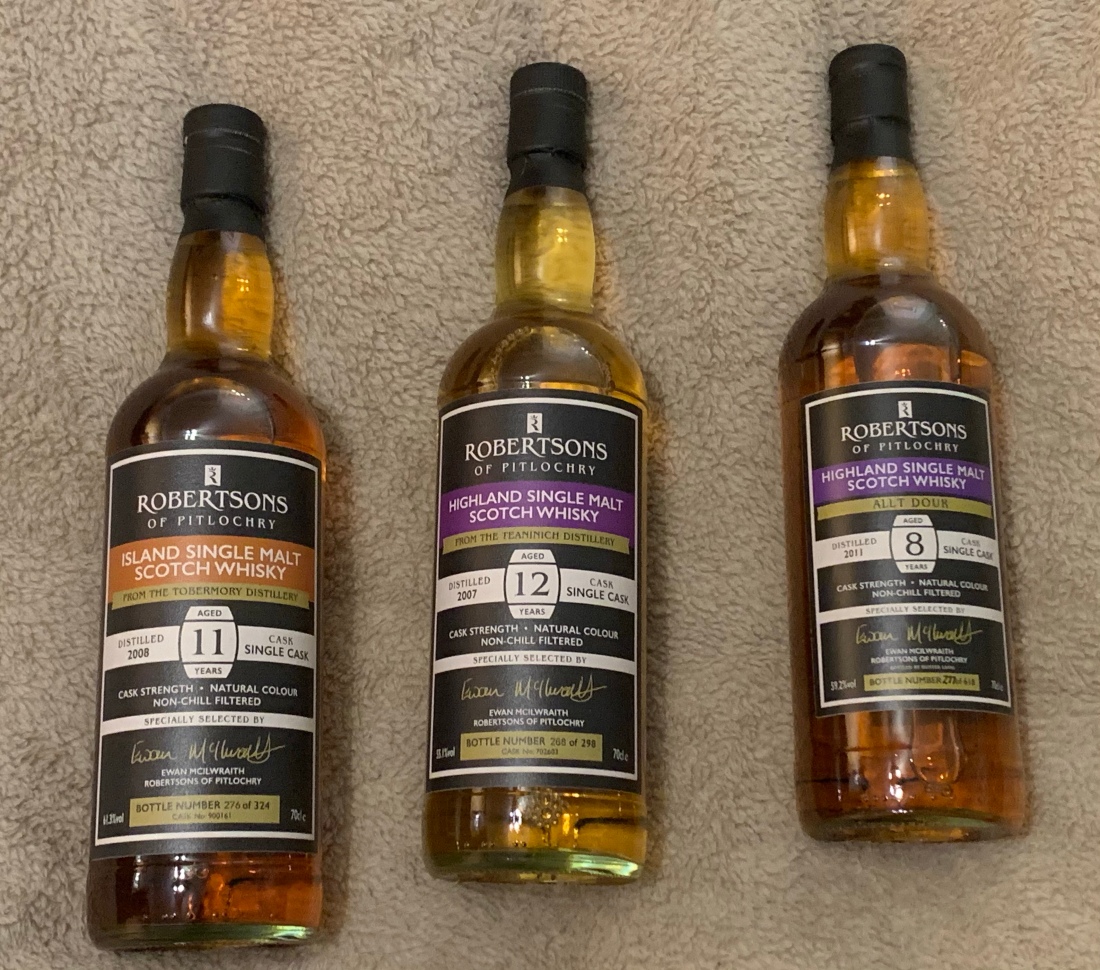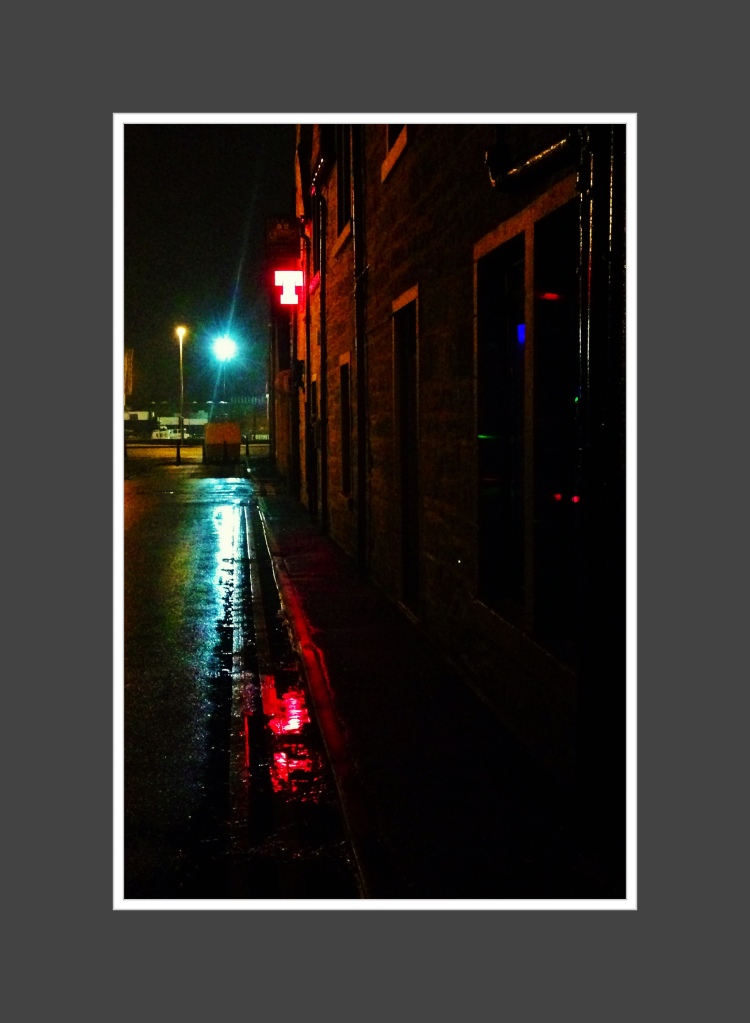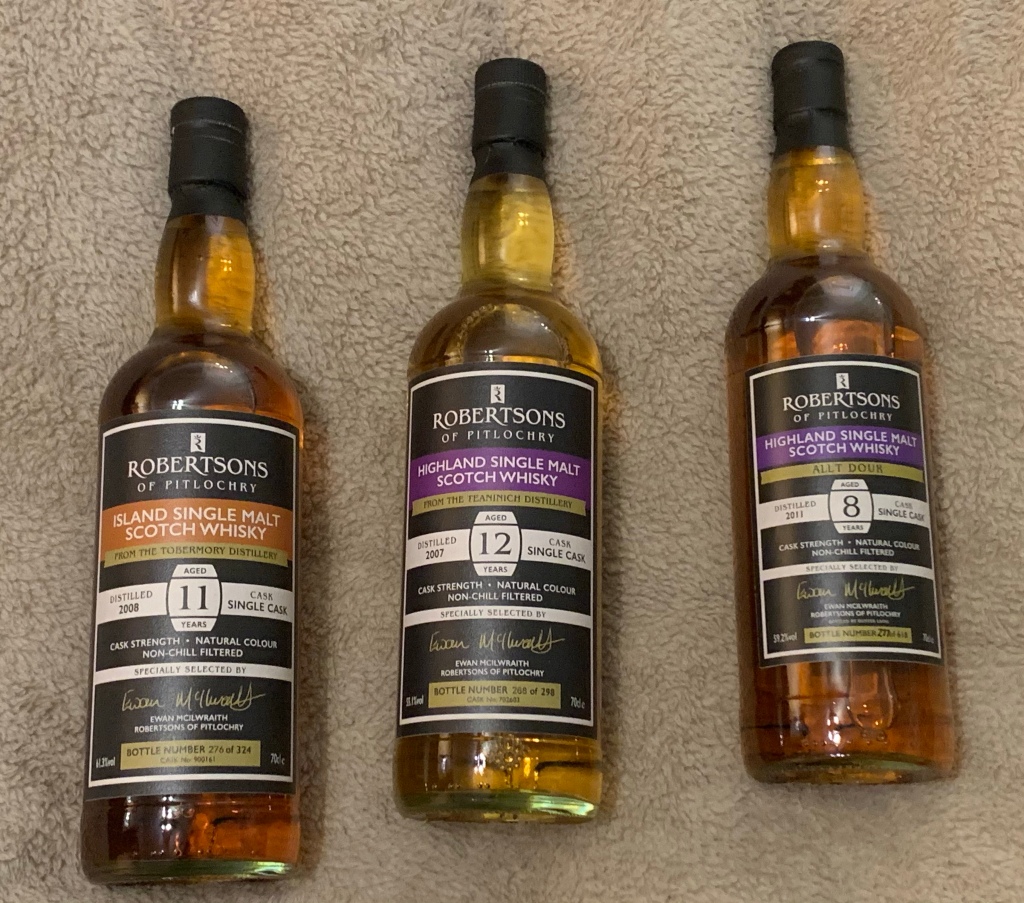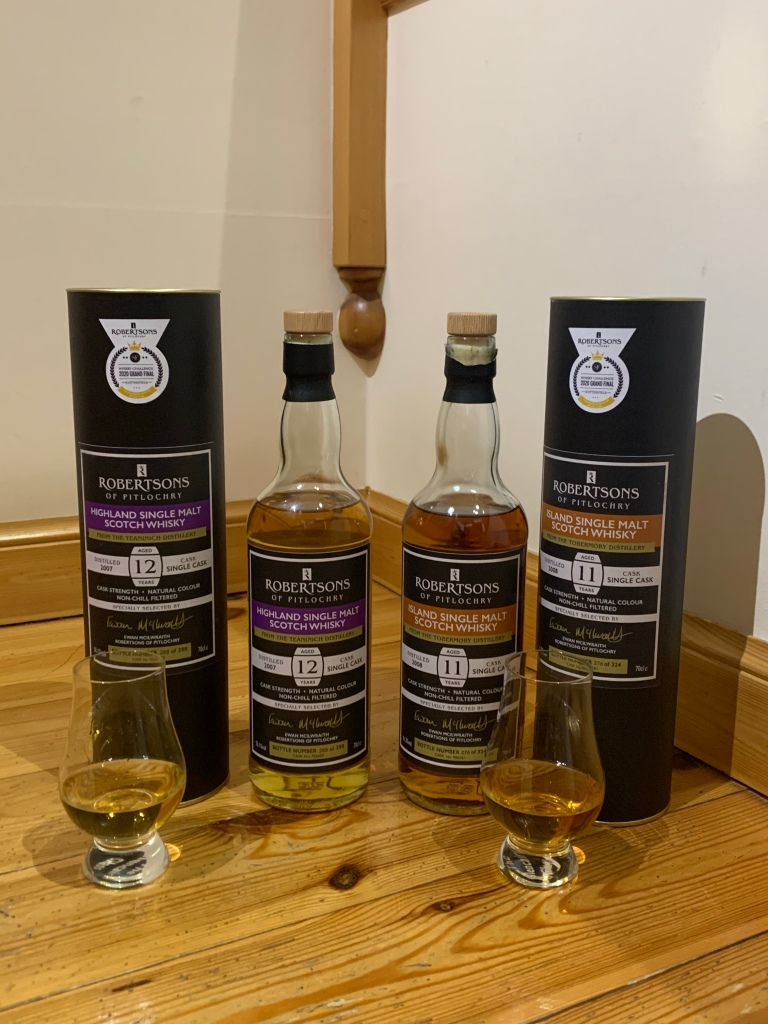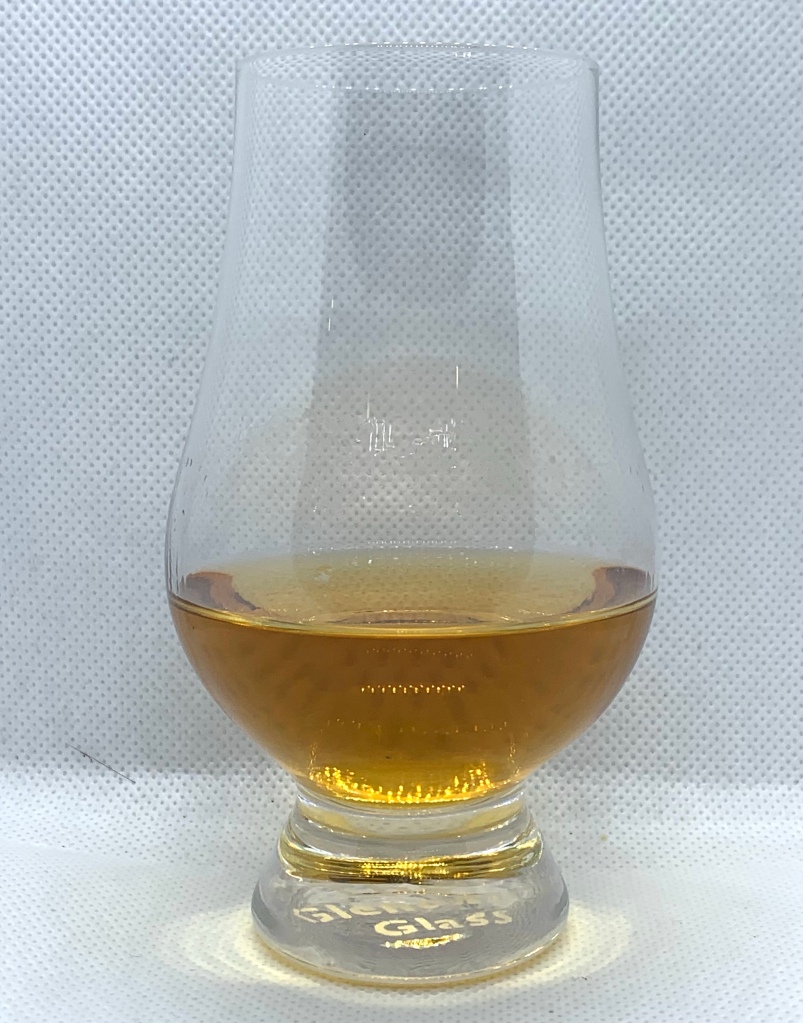Have special releases lost their meaning?
No, it’s not that wonderful time. Hopefully you don’t have Andy Williams singing that seasonal song burying itself into your brain as a particularly vicious ear worm. By time I’m likely to publish this article, we’ll be well into the Christmas shopping frenzy. But even in September when this article had its genesis, the Christmas cards are already in the shops and adverts for booking the works festive night out are all over local and social media. It’s just inescapable and it really boils my carrots when we have still to mark Hallowe’en and Bonfire Night. We’ll soon meet that point on a virtual retail Venn Diagram calendar when items for all three celebrations are on the shop floor. For me, what should be a special time of year for those who celebrate the birth of sweet baby Jesus, the failed Government assassin or even Freddie Krueger, the commercialism has just taken the shine off of things.
The whisky world isn’t immune from annual events. Whether it’s waiting for the latest whisky book from Ingvar Ronde or Jim Murray, your favourite whisky festivals or a whisky holiday, there is always something to perk our heads up like the whisky loving meerkats we are. There was one whisky event that I used to look forward to, but now I’ve become a bit jaded about them and it seems to have lost that specialness. You may have guessed that I’m talking about the Diageo Special Releases. For the past 10 years I’ve always kept an eye out for the announcement of what is getting released, to see if there is a particularly enticing bottle, especially from one of their closed distilleries. Of course I was never going to be in the market for the Port Ellen or Brora, but I’ve always kept my eyes open for a Convalmore, Pittyvaich or even a sneaky wee Benrinnes should one arise; alas for me pickings over the past 5 years have been pretty disappointing.
It hasn’t just been the selection of whiskies that have been included within the special release portfolio that has disappointed. I’m going to express a personal opinion but it’s the artwork and labelling that have started to drive me away. In recent years special releases have started to have a theme associated with them, most notably in the artwork, with the 2018 having apparently the last individual labelling style on the bottle, with 2019 and 2020 having a wildlife theme for most of them, almost like a parody of the Flora and Fauna bottlings, but still tasteful. Then came 2021, and for me things started to unravel. The theme of Legends Untold and the artwork from what may be a Dungeons and Dragons illustration makes me think that they aren’t trying to sell that whisky to the likes of me – they are aiming for a completely different kind of market.

The 2022 Special Releases have been termed ‘Elusive Expressions’ and this time they’ve decided to go full Tonto with the artwork. My attention was first brought to this in a Nickolls & Perks promotional e-mail, and it was this that really put me off looking any further. I hadn’t even noticed the prices until they were pointed out and at this point I had to just stop and ask – is this really worth it? What makes these special? Was I just being grumpy for the sake of it, or did other people feel the same?
You have to remember that besides being grumpy, I’m a bit of a traditionalist. A whisky Calvinist of sorts, where any distraction from the liquid is seen as unnecessary, distasteful thing to be avoided, in similar way to how the original Calvinists thought music, dancing and fun was unholy in church. I like plain, understated labels or those labels that hark back to a previous era, as we all know that some things were actually better in the past. This may explain part of my love for Flora and Fauna bottles or the Gordon and Macphail distillery label whiskies. Of all the special releases, the 2005, 2013 and 2017 Convalmore offerings were for me a pinnacle of subtlety, evoking an era long past and memories of a silent and unlike Brora and Port Ellen, never likely to return to production.
In his recently released book, whisky author Dave Broom writes in the introduction about how whisky can be seen as a cultural product, and a way of “looking at a country: it’s history, people, stories and thinking.” This is something already mentioned by David Hayman when he presented the BBC Scotland three part documentary entitled Scotch! The Story of Whisky. He tells the story of how Scotch is so ingrained with the culture and identity of the country. So when we look to the special releases, for me the design evokes nothing of Scotland, except some lurid artwork and a fantasy story on the back. Of course, Scotland is a modern country and we shouldn’t be adverse from being colourful and fanciful, but when you know these twee stories are the whims of a marketing team, then the lustre dims somewhat. Some of us have progressed beyond the crayon eating stage.
Was I on my own? I decided to run a small poll on social media to find out if I was on my own with my thoughts.

Don’t let the small sample size fool you. The direction of flow was pretty much one way, with 90% of people expressing what might be seen as a negative outlook, or at the very least find that the special releases not special anymore. 150 people described them as a con. Whether this meant that they were a rip off for the money or just pulling the wool over our eyes as to how special they are, I’ll never know. I’m also surprised that 6 people class the Special Releases as good value. Perhaps they are, but I’m not so sure. While I can understand why people think they are a con, that’s not what I think. You can’t tell without drinking them and I’m not prepared to buy the set, though I will admit that I think they just aren’t special any more.
Let me tell you why I feel this way.
The Spirit
Firstly, let’s look at what is truly important, and that is the liquid itself. I have no doubt that these whiskies are all good, solid whiskies. Of course you may not enjoy every single one, but all of these whiskies are cask strength, non chill filtered and as far as I can see there’s nothing stated about natural colour, so we’ll have to assume there has been some added. Mind you, even Meatloaf thought 2 out of 3 ain’t bad, and there was nothing wrong with Meatloaf. Each one of these should be a great whisky, and I’ve heard that some of them are quite tasty, enough to get me thinking that I may spring for a bottle. But there’s more elephants in the room than at PT Barnum’s circus when we turn the attention to the prices, which for a drinker is possibly the second most important thing, if not the most.
The Price
Perhaps I have got this wrong. Maybe the price should be looked at first to then decide if you can afford to spring for a bottle, but for me I decide whether I may like it first, then look at the price. And to me, while some prices seem to have kept pace with inflation, plus bearing in mind that there has been a massive increase in costs recently, I don’t find the prices outrageous, but lets get this straight now – they are adventurous at best. While they don’t have the four figure price tags of Port Ellen, Brora and latterly Convalmore, these are certainly within the reach of more people, but there are still a few that have prices that raise a few eyebrows.
If you choose to pay £275 of your hard earned pounds for grain whisky that is only 26 years old (Cameronbridge) then I would suggest that the special thing about that whisky is when you drink it, you’ll know it to be an expensive drink (read: over priced). Similarly for the Mortlach NAS. £250 for what could be a spirit with an average age of 12 years is maybe justifiable in the eyes of the producer, as they know the make up of the vatting, but for the consumer, this price point is a lot to take a punt on. Let the fact that Diageo released a 30 y.o Mortlach for £3700 in August 2022 sink in before you consider purchasing an NAS.
The Uniqueness
Have we come to the point where special now ceases to mean what it was truly meant to? I think we have come to misuse this word in a similar way to the whisky industry also uses the word ‘rare’ and ‘limited’. While the Cameronbridge makes its first appearance in the Special Release line up, the other selections have appeared more than once. Yes, they may be a rarely seen expression, but does this alone make them special when so many of their contemporaries are doing the same thing? Will it remain unique if a similar release is made in a few years time? That I can’t say, but the cynic in me feels these aren’t unique at all.
Availability
Let’s think back to the days of the mid 90’s, for that was when a forerunner to Diageo, United Distillers, released the Rare Malts series. This was a step up from the Flora & Fauna, and was a truly limited release, as the bottles were usually numbered, but not always.
Looking on the internet. It doesn’t take long to find some special releases from 5 years ago still on the primary market. There is a cask strength Dalwhinnie 30 y.o from the 2020 releases on the Master of Malt site for £574.86 – the initial RRP was £550. However I have a 25 year old cask strength Dalwhinnie that I bought from the distillery for £180 a few years earlier at nearly a third of the price. While it seems that I am comparing apples and carrots, it gets easy to see why unless you know why they are priced the way they are, the selling prices seem to be that bit more arbitrary.
While the average prices of the special release sets have come down, they are still expensive for what they are, and if you see 2017 releases still on primary retail (Collectivum XXVIII £150) perhaps you’ve misjudged things a bit. Something summed up by another whisky social media user. Link here to see thread for context.

Get the price wrong and it will sit on the shelf. However, its worth remembering that Diageo or any other large whisky producer don’t really worry. They can wait.
Where have the big priced bottles gone?
As I outlined earlier, I anticipated the Special Releases for the ability to obtain older whisky from distilleries that have fallen silent, Convalmore and Pittyvaich in particular. But now with Brora back into production and Port Ellen soon to follow, plus rumours are that there isn’t a lot of Convalmore left, this leaves the collection lacking in the rarer big guns. Some of these are now are sold in a range called Prima and Ultima. It’s an 8 bottle set which costs £36500, but this has put older whisky well outwith the range of many common enthusiasts. You can go to the web page Diageo uses for the premium whiskies and buy separately, but no price is given for single bottlings. I have seen a bottle of Convalmore 36 from 1984 in the Prima and Ultima range being sold for just over £2000, on the Justerini and Brooks website, it is something that is perhaps beyond many of us, unless we have deep pockets and few responsibilities and even less common sense.
While starting to come to a conclusion, a DM conversation that I had with a well known face in the whisky world about casks suggested that there are three types of people in the cask investment world. This caused me to smile as I can see parallels in the bottled whisky market. Whether you are a seasoned pro with the right connections, knowledge and a bit of cash behind you, or the dabbler who has an idea, but perhaps not the cash, full knowledge or the connections, or lastly the idiot – money to spend and has bought into hype. Perhaps this is how brands like Diageo see their consumers – those with the cash to buy the premium and truly rare, those who can make do with the special releases, or those who choose to buy a full set of Game Of Thrones whisky who expect to make their fortunes because of the hype. I see the Diageo special releases becoming more hyped and no obvious uniqueness about them. Regardless if I have misjudged this, for me the shine has fully rubbed off and I don’t really see that these bottlings can be seen as anything special in the face of so much other good and cheaper whisky. It is a marketing exercise and nothing more; there will be more Lagavulin or Cardhu etc, what you are doing is solely buying a brand, pretty much like buying a new car from the same dealer every 5 yrs or so, and if you want something much rarer like a Bentley, then you need to dig deep into the wallet.
With a twist in the tail, I have to admit, my interest was piqued at the 10 year old Oban. I visited the distillery in 2019 and enjoyed the cask strength 9 year old they gave us as a part of the tour, much more than the mundane 14 yr. old. In an effort to see if there really was a specialness in the release, I decided to take a chance to see if I could rekindle memories of that glorious sample.
Taste Review 142 – Oban 10 Special Release 2022.

Region – Highland Age – 10 y.o Strength – 57.1% abv Colour – Amber (0.7) Cask Type – Bourbon / Sherry / Amontillado Colouring – Not stated Chill Filtered – No Nose – Sweet. Blackberry, cherries, dark chocolate, salt air, seaweed, hint of black pepper and smoke. Palate – Instantly salty, if you can’t taste the maritime notes I’ll be surprised. Heavy cream sort of mouthfeel, yet no big spirit kick which is surprising given the strength. I found the salt became sweet with a hint of plums, oranges, and turned again with a peppery note going into the finish. Finish – medium length finish where the heat and spicy notes build. The oak starts to express itself with a slightly dry, tannic note but there is continued sweetness along with a hint of smoke coming out. The heat changes from a peppery heat to one with a hint of chilli as it slips down the throat, but it still doesn’t really have a need for water to calm it. Adding water gave me a burst of mint in the finish.

Conclusions
When all said and done, this is a nice dram. There’s plenty there to engage a whisky drinker with. I would say that if you like coastal drams, then this one should be considered. Was it as good as the 9 y.o I had at the distillery in 2019? I can’t say, as it is too long ago to make accurate comparisons as my memory isn’t that good. However I enjoyed it a lot. But was this dram special?
No It wasn’t.
I’m beginning to see why so many people think the Special Releases are a con. What I have tasted is no different to what an independent bottler would turn out, probably at a much lower price. This would appear only to be special as Diageo haven’t used these barrels for blending fodder, nor have they diluted them for core bottles or Distiller Editions. Should we all sit up like meerkats just because something is ‘special’ due to the way a distillery holds onto its casks? I could quite easily buy two independently bottled whiskies that are just as good for the same money. And two cask strength bottlings wouldn’t cost not much more.
The only people who would see these as being really special are Diageo themselves, as it is they who control the release of casks to the brokers and independent bottlers. Oban isn’t a common independently bottled whisky. But when there is only a description of being ‘limited release’ then there could be multiples of thousands released or more, and for me knowledge that my be the case takes the sheen off of the specialness. Bit like the knowledge Macallan Folio 5 was released not with 2000 bottles, but around 20,000
The last point is the price. Over £100 for a 10 year old whisky is pricey. Are we seeing the insidious creep of premiumisation here too? An unusual release shouldn’t be the excuse for jacking the prices up, as you may find the market you are aiming for will reject it, and those who do buy in will eventually move onto something else when the next fad comes along.
Despite being described by one whisky journalist on their Instagram as “good value”, I’d contend that these special releases are no longer that special. They are only special as we are being told they are but fancy artwork, hiked prices and slick marketing do not necessarily make a special whisky. While the whisky itself may be perfectly acceptable, the only thing making this special in my opinion is the fact we are being told that it is.
I think Diageo need to perhaps rethink the Special Release as for many they have lost their sparkle. I for one will not be buying another Special Release when so much other good value whisky is available. Special means different things to each of us, but for me this falls short of the mark.
Yours In Spirits
Scotty
Photo Credits
All Photos – Authors Own



















